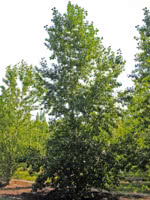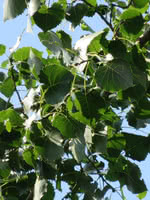Mon-Fri 9am - 5pm Mountain time
Tristis Poplar vs Eastern Cottonwood
Populus x Tristis
Populus deltoides
NOT AVAILABLE THIS SEASON - MIGHT RETURN
NOT AVAILABLE THIS SEASON - MIGHT RETURN
Tristis Poplar is a large deciduous tree. It is cold hardy, disease resistant, and relatively drought tolerant. Tristis Poplar loses its leaves later in the year than other Poplars, making it a great ornamental tree in fall.
It's known for its strongly scented balsamic buds and yellow foliage in autumn. Because of its size, Tristis Poplar is most suitable for large properties and will help prevent wind erosion.
Tristis Poplar is slower-growing than many newer hybrids, for a longer useful lifespan. Tristis grows especially well in the southern prairies due to its resistance to cold dry winds.
This fast and tall growing tree has an open, spreading crown and is more suited to waterside planting than other aspens and poplars.
Commonly found in floodplains, stream valleys and lake shores, this tree quickly fills in reclamation areas.
In order to reproduce and grow effectively, Eastern Cottonwood relies on the natural flooding cycle to ensure they are not out-competed by weeds and other plants.
Tristis Poplar Quick Facts
Eastern Cottonwood Quick Facts
In row spacing: 2.4 m (8 ft)

